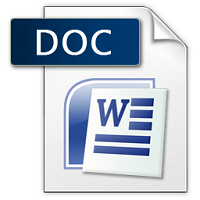₹198.00
Scroll down for Match your questions with Sample
Note- Students need to make Changes before uploading for Avoid similarity issue in turnitin.
Another Option
UNIQUE ASSIGNMENT
0-20% Similarity in turnitin
Price is 700 per assignment
Unique assignment buy via WhatsApp 8755555879
Description
SESSION JULY/AUGUST 2023
PROGRAM MASTER OF COMMERCE (MCOM)
SEMESTER I
COURSE CODE & NAME DCM6102 – MANAGERIAL ECONOMICS
Assignment Set – 1st
Questions
- What is Law of Demand? What are its exceptions?
Ans:The term demand is different from desire, want, will or wish. In the language of economics, demand has different meanings. Any want or desire will not constitute demand.
Demand = Desire to buy + Ability to pay + Willingness to pay The term demand refers to total or given quantity of a commodity or a service that is purchased by the consumer in the market at a particular price and Its Half solved only
Buy Complete from our online store
https://smuassignment.in/online-store/
MUJ Fully solved assignment available for session SEPT 2023.
Lowest price guarantee with quality.
Charges INR 198 only per assignment. For more information you can get via mail or Whats app also
Mail id is aapkieducation@gmail.com
Our website www.smuassignment.in
After mail, we will reply you instant or maximum
1 hour.
Otherwise you can also contact on our
whatsapp no 8791490301.
- Describe the features of various market structures.
Ans:The primary characteristics of markets are as follows:
- The number and size distribution of sellers
- The number and size distribution of buyers
- Product differentiation
- Conditions of entry and
- Explain the different types of cost with suitable example.
Ans: The types of costs are as follows:
- Money cost and real cost – When cost is expressed in terms of money, it is called as money cost. It relates to money outlays by a firm on various factor inputs to produce a commodity. In a monetary economy, all kinds of cost estimations and calculations are made in terms of money only.
Hence, the knowledge
Assignment Set – 2nd
Questions
- 4. Outline the characteristics and causes of business cycle.
Ans:
Characteristics of business cycles:-
- It is a wave-like movement, and it is not a random fluctuation.
- It is synchronic in nature.
It is all embracing; it covers the entire economy. Any change in one part of the economy affects the entire
- Summarize the different objectives of pricing policies.
Ans:
The following objectives are to be considered while fixing the prices of the product:
- Profit maximisation in the short term – The primary objective of the firm is to maximise its profits. Pricing policy as an instrument to achieve this objective should be formulated in such a way as to maximise the sales revenue and profit.
Maximum profit refers to the highest possible profit. In the short run, a firm not only should be able to recover its total
- Define and discuss the importance of consumption function in detail.
Ans:Importance of consumption function:-
In the formulation of this policy, consumption function plays a very important role.
- It invalidates Say’s law of markets Say’ law of markets which is the fundamental basis of classical theory of income and employment, states that” Supply creates its own demand”. As a result, there is no possibility of overproduction and unemployment.
Consumption function tells us that the entire increase in additional income is not spent on consumption goods


